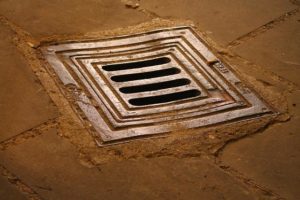What to Know About Your Basement Floor Drain

A big part of the waterproofing process is installing a floor drain and sometimes french drains as well
One of the most stressful experiences you can have as a homeowner is a flooded basement. The feeling of dread when you open the door, look down the stairs, and see the water where it should not be is unmatched. Having a properly waterproofed basement is key to never having to experience that (or not having to experience it again). A big part of the waterproofing process is installing a floor drain (and sometimes french drains as well). Unfortunately, most of these systems are not the type of thing that you can leave and forget about forever and have it just magically do its job. You do need to know how the basement waterproofing system works. Read on to learn some things you should know about your basement drain.
Do You Already Have A Drain?
Many homeowners do not know if they even have a floor drain unless they have been the ones to decide to waterproof the basement. How is this possible? Because many homes that already have a floor drain still flood if the floor drain is clogged – the same way that houses can flood if they don’t have a floor drain at all. The basement floor drain looks like a shower drain (it is not a sump pump), connects to a pit or the sewer system, and is a way for water to drain out of the basement by funneling under the foundation away from the home.
Why Is The Floor Drain Important?
The job of the floor drain is to be an outlet for the removal of unwanted water in your basement. This is accomplished by being at the lowest part of the basement and using gravity to funnel the water away from the home. This is not designed to prevent outside water from getting in, like french drains and other waterproofing systems; this is designed to limit the damage done by water already in the home (that overflows, leaks, or bursts from pipes and appliances).
What Issues Arise With Floor Drains?
The biggest potential issue of a floor drain is that it can get clogged and you won’t know it. Floor drains need to be inspected, maintained, and cleaned yearly, and if they aren’t dirt and debris can easily accumulate. If enough does, the drain will clog and it won’t work to drain the water away. Unclogging it is usually fairly easy, but if the basement is already flooding dangerously, that is not the time to be trying to do it for the first time. If you’re unsure if you have a floor drain, where it is, or how to inspect it, we can help.
Contact All Aspects Waterproofing Today for a Foundation Inspection!
When it comes to finding the best solution for your crawl space encapsulation and waterproofing needs, contact All Aspect Waterproofing, a Better Business Bureau A+ rated company with over 30 years of experience in the Washington, DC./Maryland/Virginia area. We have a great deal of experience in waterproofing, mold testing, and mold remediation, and we want to make you feel at home again. Contact us online or by calling 1-866-999-3110 or 301-766-4420. To see what we’re up to, follow us on Facebook, Twitter, Pinterest, YouTube, LinkedIn, and Houzz.
